Come join us now, and enjoy playing your beloved music and browse through great scores of every level and styles!
Can’t find the songbook you’re looking for? Please, email us at: sheetmusiclibrarypdf@gmail.com We’d like to help you!
Table of Contents
Count Basie Collection Artist Transcriptions, Piano.
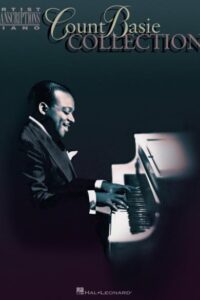
Best Sheet Music download from our Library.
Please, subscribe to our Library.
If you are already a subscriber, please, check our NEW SCORES’ page every month for new sheet music. THANK YOU!
COUNT BASIE (Sheet Music in the SMLPDF)

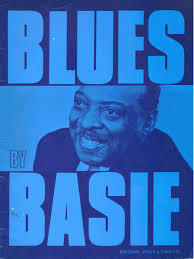
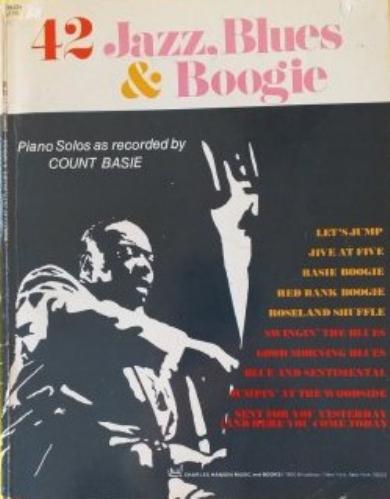


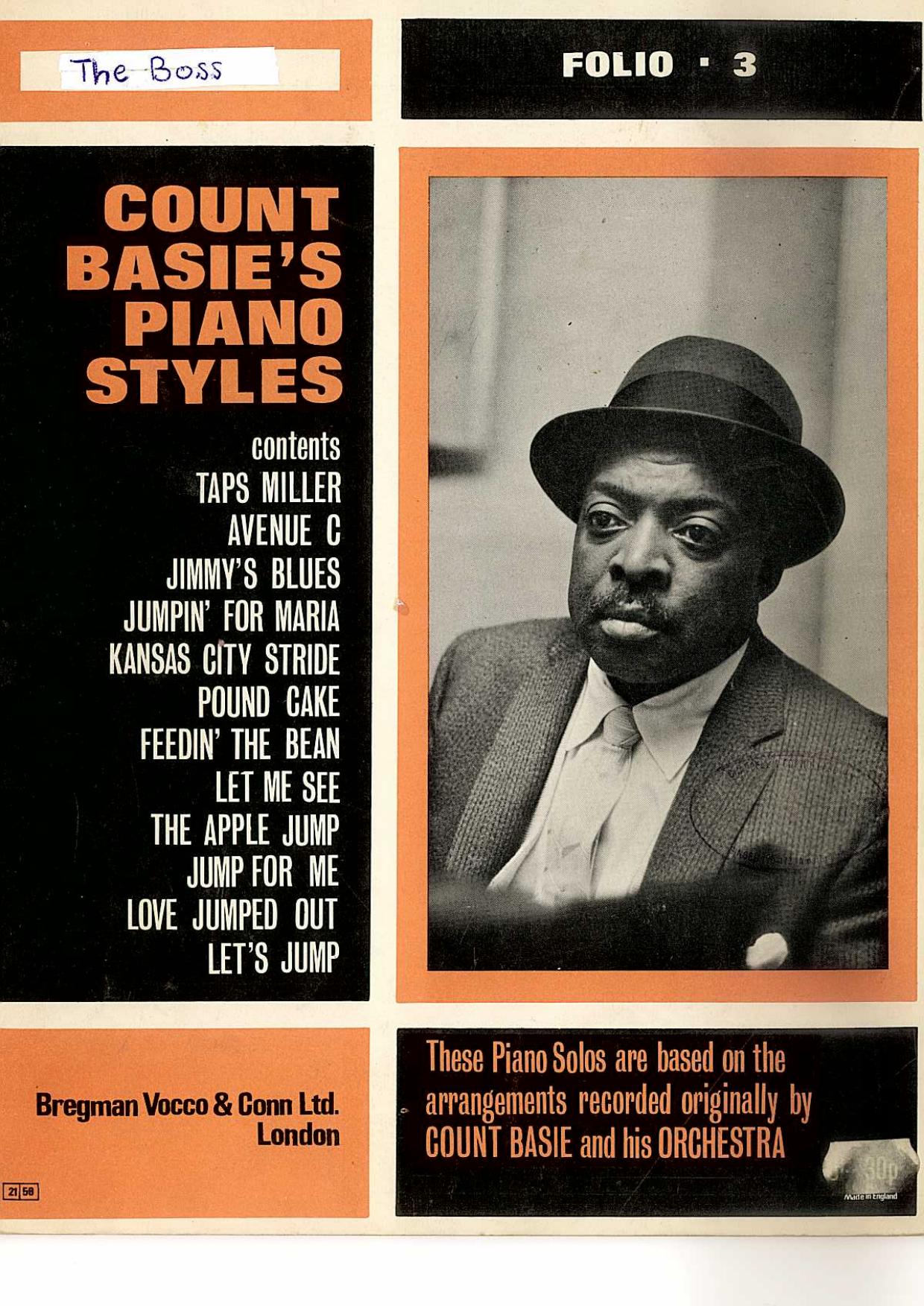
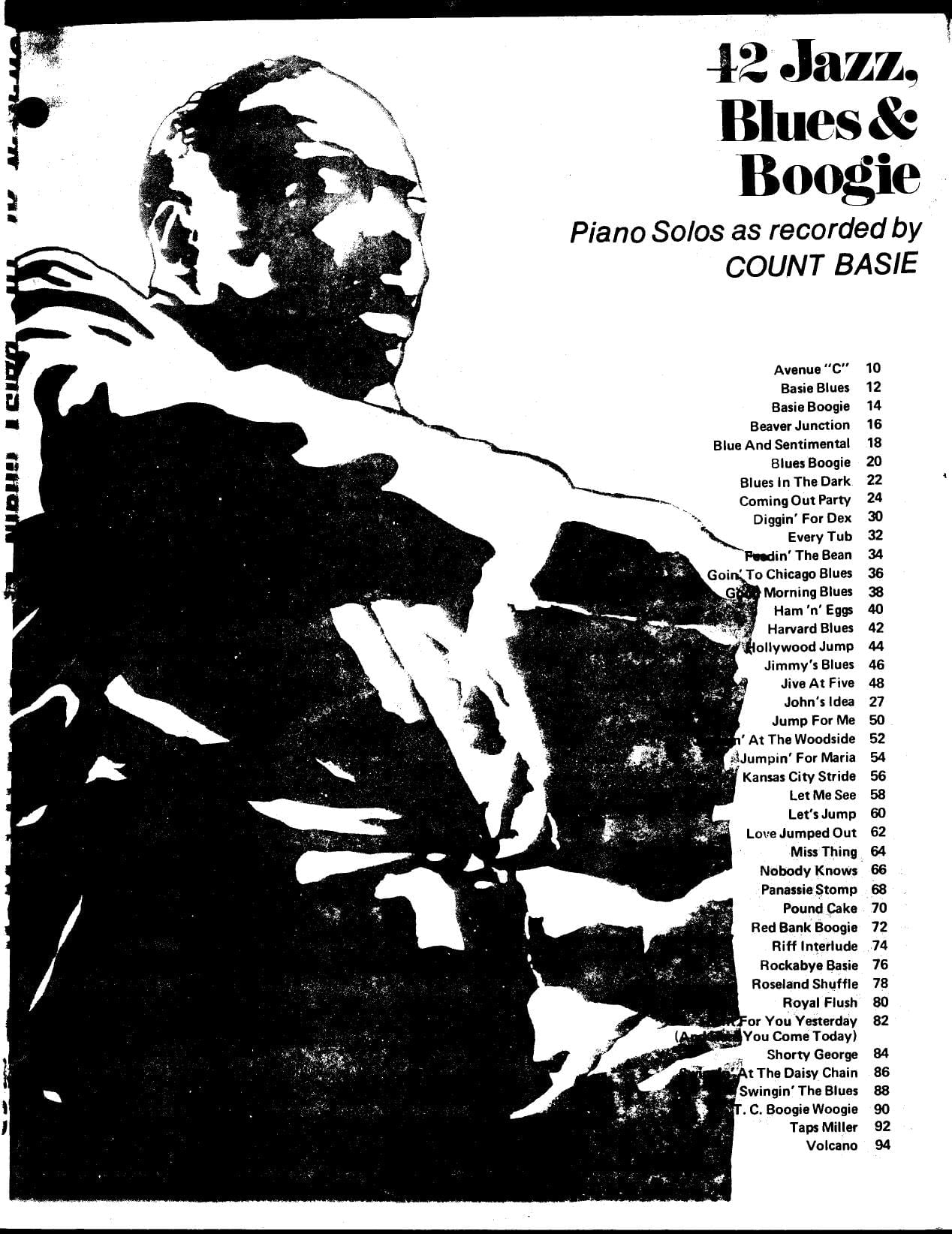
Count Basie: A Jazz Luminary
Browse in the Library:
Or browse in the categories menus & download the Library Catalog PDF:
Biography: The Swing Era’s Maestro
William James “Count” Basie (1904–1984) emerged as one of jazz’s most iconic bandleaders, shaping the big band sound and the swing era. Born in Red Bank, New Jersey, Basie’s early exposure to music came through his mother, a pianist. By his teens, he abandoned formal education to immerse himself in New York’s vibrant jazz scene, learning from Harlem stride pianists like Fats Waller.
In the 1920s, Basie honed his skills touring with vaudeville acts and playing in Kansas City’s territory bands, including Walter Page’s Blue Devils. By 1929, he joined Bennie Moten’s orchestra, a cornerstone of Kansas City jazz. After Moten’s death in 1935, Basie formed the Barons of Rhythm, which became the Count Basie Orchestra. Their residency at Kansas City’s Reno Club caught the ear of producer John Hammond, leading to a national breakthrough.
Relocating to New York in 1936, Basie’s ensemble became synonymous with swing, featuring legends like Lester Young (tenor sax), Freddie Green (guitar), Jo Jones (drums), and Walter Page (bass)—collectively known as the All-American Rhythm Section. Despite financial struggles during the 1940s and the big band era’s decline, Basie adapted by leading smaller groups before reviving his orchestra in the 1950s. Collaborations with vocalists like Frank Sinatra and Ella Fitzgerald cemented his resurgence. Basie remained active until his death in 1984, leaving a legacy carried on by his orchestra.
Music Style: The Kansas City Sound
Basie’s style distilled Kansas City jazz into a refined, swinging art form. Key elements include:
- Minimalist Piano: Basie’s “less is more” approach used sparse, rhythmic phrases to punctuate arrangements, often employing bluesy trills and syncopated chords.
- Riff-Based Arrangements: The band built compositions around short, repeating melodic phrases (riffs), creating dynamic layers through call-and-response between brass and reed sections.
- Swing Rhythm: The All-American Rhythm Section’s “walking” bass lines, Freddie Green’s steady guitar chording, and Jo Jones’ hi-hat cymbal work defined a relaxed yet propulsive groove.
- Blues Foundation: Many compositions, like “Jumpin’ at the Woodside,” were grounded in 12-bar blues, infused with improvisational flair.
Licks and Harmony: The Art of Simplicity
Basie’s genius lay in his ability to elevate simplicity. His piano licks often featured:
- Blues Scales: Basie peppered solos with bent notes and blues scales, as heard in “One O’Clock Jump.”
- Syncopated Chords: His left-hand stabs and right-hand trills created rhythmic momentum.
- Walking Bass Lines: Collaborating with Page, Basie’s piano often mirrored bass patterns, reinforcing the swing feel.
Harmonically, the band utilized:
- Head Arrangements: Improvised, memorized sections allowed spontaneity, with brass and saxes trading riffs.
- Block Voicing: Saxophones and trumpets played in unison or harmonized in fourths, creating a lush, cohesive sound.
- Tension and Release: Basie’s arrangements balanced explosive brass shouts with subdued, bluesy passages.
Influences: Roots and Reciprocity
Basie drew inspiration from:
- Fats Waller and Earl Hines: Their stride piano techniques informed his early style.
- Bennie Moten: Moten’s band provided the blueprint for Basie’s riff-driven approach.
In turn, Basie influenced generations, from Oscar Peterson’s piano virtuosity to modern big bands like Wynton Marsalis’ Jazz at Lincoln Center Orchestra. His collaborations with Duke Ellington (e.g., First Time!, 1961) showcased mutual admiration, blending their distinct styles.
Legacy: The Eternal Swing
Basie’s impact is indelible:
- Big Band Revival: He sustained big band jazz through the rock era, inspiring ensembles like Maynard Ferguson’s.
- Awards and Honors: Inducted into the Grammy Hall of Fame and awarded multiple Grammys, including a posthumous Lifetime Achievement Award.
- Educational Influence: His arrangements are jazz pedagogy staples, studied for their rhythmic precision and harmonic clarity.
- The Orchestra Lives On: The Count Basie Orchestra continues touring, led by Scotty Barnhart, preserving his sound.
Notable Works
- Compositions/Arrangements:
- “One O’Clock Jump” (1937)
- “Jumpin’ at the Woodside” (1938)
- “April in Paris” (1955)
- Albums:
- The Atomic Mr. Basie (1958) – A hi-fi masterpiece with Neal Hefti arrangements.
- Basie Swings, Bennett Sings (1958) – Collaboration with Tony Bennett.
- Ella and Basie! (1963) – With Ella Fitzgerald.
Filmography
- Blazing Saddles (1974) – Basie’s orchestra appears in a surreal cameo.
- The Benny Goodman Story (1956) – Basie plays himself.
- Cinderella (1960) – TV musical with Basie’s band.
Discography Highlights
- 1930s-40s: The Original American Decca Recordings (1937–1939)
- 1950s: April in Paris (1956)
- 1960s: Sinatra at the Sands (1966) – Live with Frank Sinatra.
- 1970s: Basie and Zoot (1975) – Duets with Zoot Sims.
Documentaries and Videos
- Documentaries:
- Ken Burns’ Jazz (2001) – Episode 6 features Basie’s rise.
- Count Basie: Through His Own Eyes (2020) – Archival interviews.
- Performances:
- “One O’Clock Jump” (1965)
- “April in Paris” (1956)
- “Jumpin’ at the Woodside” (1938)
Conclusion: The Count’s Enduring Kingdom
Count Basie’s artistry transcended trends, marrying simplicity with sophistication. His orchestra’s vitality, rooted in swing and blues, remains a testament to collaborative creativity. As long as jazz swings, Basie’s throne in its pantheon is secure.

